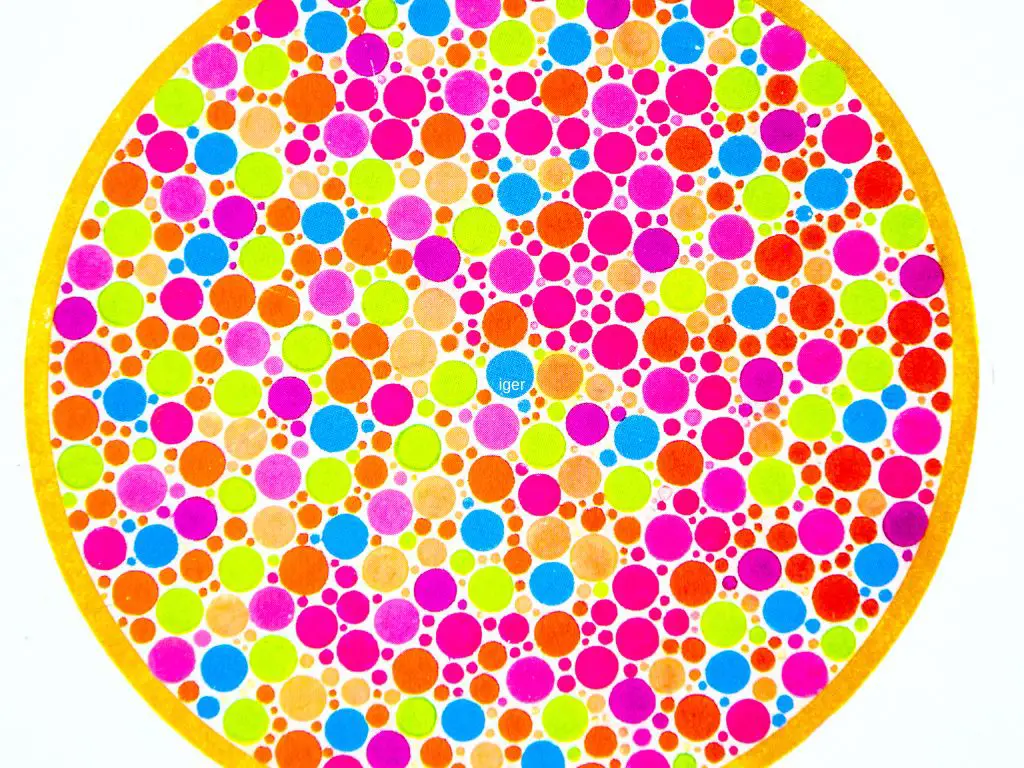How does color blindness work
Color blindness is a condition where an individual is unable to see certain colors or shades of colors. This is typically caused by a genetic mutation that affects the cones in the retina, which are responsible for detecting different colors.

Individuals with color blindness may be unable to see red, green, blue, or a combination of these colors. This can make it difficult for them to differentiate between certain colors, especially in low light conditions.
There are different types of color blindness, including protanomaly (difficulty seeing red), deuteranomaly (difficulty seeing green), and tritanomaly (difficulty seeing blue). These conditions are typically inherited and are more common in males than females.
There is no cure for color blindness, but there are ways to manage the condition and improve color perception, such as using special glasses or filters.
How does color blindness happen?
Color blindness typically occurs due to a genetic mutation that affects the cones in the retina, which are responsible for detecting different colors. This mutation can be inherited from a parent or it can occur spontaneously.
Color blindness is more common in males than females because the genes that cause color blindness are on the X chromosome, which males only have one of. Females have two X chromosomes, so if one has the mutation, the other can compensate for it.
In some cases, color blindness can also be caused by other factors, such as certain medications or medical conditions that affect the retina.
What does a color blind person see?

A color blind person sees colors differently than someone with normal color vision. Depending on the type of color blindness, a person may not be able to see certain colors or shades of colors, such as red, green, or blue. Overall, a color blind person may see the world as duller and less vibrant than someone with normal color vision.
🔬 Subscribe to SciMail
Get the latest science discoveries straight to your inbox!
What are the 3 types of color blindness?
There are three main types of color blindness: protanomaly, deuteranomaly, and tritanomaly.
- Protanomaly is a type of red-green color blindness where an individual has difficulty seeing red and may see it as darker and less vibrant than it appears to someone with normal color vision.
- Deuteranomaly is another type of red-green color blindness where an individual has difficulty seeing green and may see it as more yellow and less vibrant than it appears to someone with normal color vision.
- Tritanomaly is a type of blue-yellow color blindness where an individual has difficulty seeing blue and may see it as more green and less vibrant than it appears to someone with normal color vision.
 Symptoms of color blindness
Symptoms of color blindness
The main symptoms of color blindness are difficulty seeing certain colors or shades of colors, such as red, green, or blue. This can make it difficult for an individual to differentiate between certain colors, especially in low light conditions.
Other symptoms of color blindness may include:
- Struggling to identify colors in everyday objects, such as traffic lights or food labels
- Mistaking one color for another, such as confusing red and green
- Inability to distinguish between similar shades of color, such as dark blue and purple
- Difficulty reading and interpreting color-coded information, such as maps or charts
- Struggling to match colors when dressing or painting

If you suspect that you or someone you know may have color blindness, it is important to speak to a healthcare provider for a proper diagnosis and treatment options.
Treatment for color blindness
There is no cure for color blindness, but there are ways to manage the condition and improve color perception.
Some treatment options for color blindness include:
- Using special glasses or contact lenses with colored filters to enhance color perception
- Using assistive technology, such as apps or software that can help identify colors and distinguish between shades
- Undergoing vision therapy to improve color perception and visual processing skills
- Using color coding or other visual aids to help with daily activities, such as labeling items or organizing objects by color

It is important to work with a healthcare provider to determine the best treatment plan for your specific needs and situation.


 Symptoms of color blindness
Symptoms of color blindness
Leave a Reply